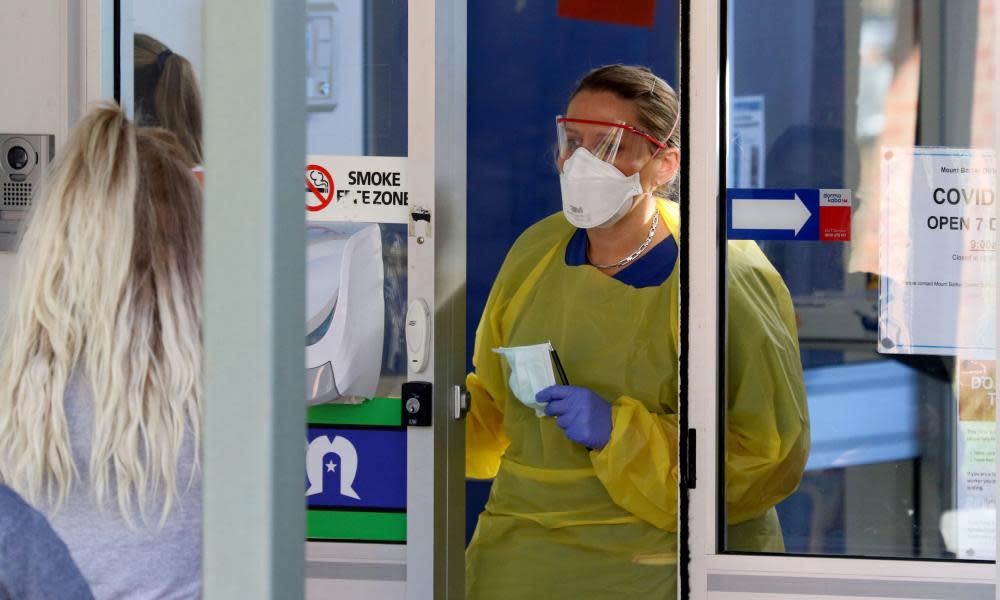Coronavirus ventilators: Australian government asks carmaker Ford for help in boosting production

The federal government has begun urgent discussions with Ford to help boost ventilator stocks and is investigating whether veterinary equipment and sleep apnoea machines can be converted for use in the Covid-19 pandemic.
The coronavirus crisis is placing immense pressure on the global availability of ventilators, which are needed to pump oxygen into the failing lungs of critically ill patients.
Italy’s swamped hospitals have found themselves with ventilator shortages, forcing doctors to make heart-wrenching decisions, while in New York, mayor Bill de Blasio warned that the city needed 15,000 ventilators urgently or its death toll would spike.
Australia currently has 2,300 ventilators in intensive care units across the hospital system, has surge capacity for another 5,000 and is seeking to dramatically boost stocks.
An order for 1,000 new invasive ventilators – which place tubes down the trachea – is already in with Melbourne company ResMed, while Medtronic, Philips, GE and ResMed are also helping to produce non-invasive ventilators.
The government is also investigating whether it can convert ventilators used on animals in veterinary care. Sleep apnoea machines are also being considered for conversion, as are anaesthetic machines.
In Italy, the UK and the US, car manufacturers have offered to use their manufacturing and design expertise to boost the production of ventilators.
This week, Ford announced it would provide General Electric Healthcare, which already produces ventilators, with a “simplified design” for ventilators that would allow it to significantly boost stocks in the US.
The Australian government has immediately engaged in talks with Ford Australia, and the Guardian understands the company has offered to share its design knowledge here too.
The Australia and New Zealand Intensive Care Society recently surveyed intensive care units for their capacity to meet the coming demand. Its president, Dr Anthony Holley, said there was no current shortage of ventilators in Australia.
Holley said the hospital system had a surge capacity for 5,000 new ICU beds, each equipped with a ventilator.
“There is the potential, should more surge beds be required, for there to be a deficit in the short term, but a number of agencies, and most importantly the government, are working very aggressively to mitigate any potential shortfall,” Holley said.
The industry minister, Karen Andrews, has been charged with increasing domestic production of equipment such as ventilators. She told the Guardian a number of local manufacturers were ready to begin producing and a number of others were being assessed for their viability.
“We’ve made significant progress to secure further supply of ventilators and increase domestic production ahead of the peak of the virus in coming months,” Andrews said.
“From a company that makes orthotics offering to 3D-print components through to our automotive industry, there has been an incredible willingness from Aussie businesses to try and do what they can to help.”
The Australian Healthcare and Hospitals Association’s chief executive, Alison Verhoeven, said new triaging processes were also being developed to ensure ventilators were used only for patients who needed them most.
Asked about ventilator numbers, Verhoeven told Guardian Australia: “Am I comfortable? Am I comfortable about anything at the moment? No. But in terms of the resources available and the planning … I think there’s reasonable plans in place.”
The challenge would be in ensuring ventilators were used in a way that covered as much of the population as possible, Verhoeven said. That would be a problem particularly in rural and regional areas.
“I think the challenge is going to be knowing where to place those and having them placed in facilities such that there can be maximum population coverage; having smart plans in place to shift patients out of areas where there might not be ventilators available – in rural and regional areas – to centralised facilities.”

 Yahoo News
Yahoo News 
